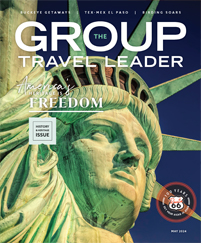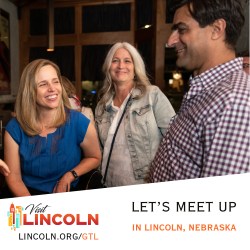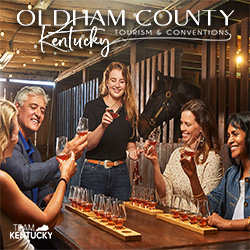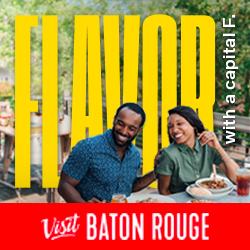America is a nation of immigrants.
In the United States, as elsewhere, immigrant communities hold dear to traditions brought with them from their old homes, kaleidoscopes of beauty that enrich the new places where they settled. You’ll often find this diverse (and delicious!) heritage celebrated at annual festivals that showcase traditions and contributions through music, dance, arts and crafts, and of course, delectable foods.
With ornate costumes, jubilant performances and colorful parades, international festivals are a great way to embrace the unique history, culture and heritage of a city. Here are some festivals and events that offer a distinctive ethnic experience for your group travelers.
Puerto Rican Parade and Festival del Coquí
Hartford, Connecticut
It may get cold in the winter, but Connecticut’s capital city has a strong connection to the Caribbean, particularly to Puerto Rico. About 100,000 people in Connecticut have Caribbean roots, with Puerto Ricans making up the largest portion of that population. Although the first immigrants arrived in the 1880s, internal migration from the island increased significantly following World War II.
That warm West Indian heritage and hospitality are on display every year at the Puerto Rican Parade and Festival del Coquí, which brings together thousands of residents and tourists for a massive daylong celebration of island culture.
The festivities kick off with the Greater Hartford Puerto Rican Day Parade, featuring police vehicles, fire trucks, floats, drum lines, dancers and horses. The red, white and blue flags of both the U.S. and Puerto Rico (a U.S. territory) line the parade route.
“The Puerto Rican Day Parade and Festival is one of the most energetic and vibrant events that takes place in Hartford,” said Connecticut State Representative Julio Concepcion. “Given the city’s large Puerto Rican population, the parade and festival are an amazing opportunity to highlight the rich culture and heritage of our people. The day is filled with great music, food and a genuine great time celebrating ‘La Isla del Encanto.’”
Following the parade, the Festival del Coquí fills historic Bushnell Park, where attendees feast on yellow rice, roast pork, kabobs, fritters and turnovers; shop for handicrafts; and enjoy world-class performers who travel specifically from the island to be part of the event.
Other iconic Hartford activities include a visit to the Mark Twain House and Museum. Known as “America’s Downton Abbey,” the gracious mansion is where the author wrote some of his best-known works, including “Tom Sawyer” and “Huckleberry Finn.” Groups can stroll the pedestrians-only Pratt Street Historic District (where salsa dancers converge on summer evenings) and check out the city’s oldest site with a tour of the Ancient Burying Grounds, which were established in 1640.
Dyngus Day
Buffalo, New York
Buffalo, New York, celebrates its proud Polish heritage throughout the year, but never harder than on the Monday following Easter Sunday, when the city shakes off winter, commemorates the end of Lent and declares itself the Dyngus Day Capital of the World. The origins of the Eastern European holiday are murky. It might be in honor of Polish Prince Mieszko I being baptized in 966, or it could be a nod to a pagan festival for the god of water, which included fertility rituals such as throwing water and swatting single women with pussy willows. Origins aside, Dyngus Day is always a grand and goofy good time in Buffalo, which has one of the largest Polish-American populations in the country.
Family-owned taverns in the city’s Broadway-Fillmore neighborhood — known as Polonia — fill up early on Monday morning, with revelers indulging in breakfasts consisting of beer, hard-boiled eggs, and delicious meat- or potato-stuffed dumplings known as pierogies. There’s also a kielbasa-eating contest, a parade filled with red-and-white-bedecked floats, dancers in traditional dress and butter molded into the shape of lambs. The Corpus Christi Church has all-day bowling in its basement bowling alley, along with a traditional Polish mass; and food trucks, polka bands and festivities are found throughout the entire city.
“Dyngus Day is one of the greatest party days of the year in Buffalo,” said Brian Hayden, communications director of the Buffalo History Museum. “It’s a chance for anyone who’s Polish [or Polish at heart] to revel in the city’s culture and history and drink cold beer. Those who find their way to our city will not be disappointed.”
After the fun of Dyngus Day, groups will want to marvel at the magnificence of Niagara Falls, admire the landscapes of Frederick Law Olmsted’s parks and tour some of the seven structures in the area designed by famed architect Frank Lloyd Wright. The Buffalo AKG Art Museum has recently reopened after a three-year expansion and renovation, and the lively waterfront is definitely worth exploring.
Irish Festival
Dublin, Ohio
Dubbed “the other Dublin,” this small town in central Ohio goes all-out for the Emerald Isle each summer, hosting one of the largest three-day Irish festivals in the world. Now in its third decade, the Dublin Irish Festival is a nonstop celebration of all things Celtic and is attended by more than 100,000 people.
“The festival has everything that you can think of – live music and food and, of course, Guinness,” said Sara Blatnik, marketing director for Visit Dublin Ohio. “But there are also so many cultural activities. You can track your genealogy and learn how to play a tin whistle. In the sports area, you can watch everything from a spear toss to sheep herding. The shopping is especially great — more than a hundred vendors with handmade apparel, crafts and musical instruments.”
Groups that visit will also want to check out the Irish Fairy Door Trail in the historic downtown, following the map to find all 11 and collect a free T-shirt. The city also has a 70-plus piece collection of public art, including a popular “corn field” with six-feet-tall cement cobs.
Odunde Festival
Philadelphia
On the second Sunday in June, up to half a million people converge on South Street in one of Philadelphia’s oldest historically African-American neighborhoods for the Odunde Festival. The largest Black and African cultural festival in the country, Odunde means “Happy New Year” in Yoruba, and the inspiration for the event stems from celebrations in Nigeria.
“Odunde was created by my mother Lois Hernandez in 1975,” said festival CEO Oshunbumi “Bumi” Fernandez-West. “I was strapped on her back, a year old.”
The event Fernandez-West began with her friend Ruth Arthur and a $100 grant on a single city block now covers 15 and has a $28 million economic impact on the city of Philadelphia in one 10-hour period. Odunde features two stages of live entertainment and more than 100 arts and crafts and food vendors, all of them celebrating African-Americans and the people of the African diaspora.
“Our mission is to educate the public about the importance of African and African American culture,” Fernandez-West said. “My mother always said that she never thought it would go to this magnitude, never in her wildest dreams. Odunde is for those who love the beautiful continent of Africa. We bring Africa to you.”
While in the City of Brotherly Love, groups will want to experience Philadelphia’s world-renowned art museums, including the Barnes, and the rich Revolutionary War history like the Liberty Bell and Independence Hall on display in the heart of the old city. To further step back in time, stroll the cobblestone streets and admire flower boxes and quaint Colonial-era architecture at Elfreth’s Alley. Philadelphia also boasts an admirable culinary scene, from Michelin-starred restaurants to all the delicacies on offer at the Reading Terminal Market.
Basque Festival
Elko, Nevada
The glitz of Las Vegas often grabs the spotlight in Nevada, but the state has culture that extends far beyond casinos. Emigrating in the 19th century from a region on the northern border between Spain and France, the Basque people first came for gold mining but stayed and put their sheepherding skills to use in the north’s rugged mountains, leaving a distinct stamp on the region’s culture. Every Fourth of July weekend, the town of Elko holds the National Basque Festival, an immersive extravaganza of traditional dancing, music, handmade crafts, rural sports competitions (like woodchopping, weightlifting and tug-of-war) and more. Revelers enjoy succulent Basque specialties like pickled beef tongue and grilled lamb, accompanied by refreshing Picon punch, a cocktail of brandy, grenadine and Amer Picon bitters.
“Elko has a great Western heritage,” said Tracie Barnthouse, chief communications officer for Travel Nevada. “The festival is a great time for the community to come together and celebrate their culture.”
Members of Nevada Basque community still own and operate a number of historic boarding houses, such as Elko’s Star Hotel, which opened in 1910 to house sheepherders during the harsh winter months. Groups will want to visit the Western Folklife Center as well as the California Trail Historic Interpretive Center for a glimpse back into the Old West.










